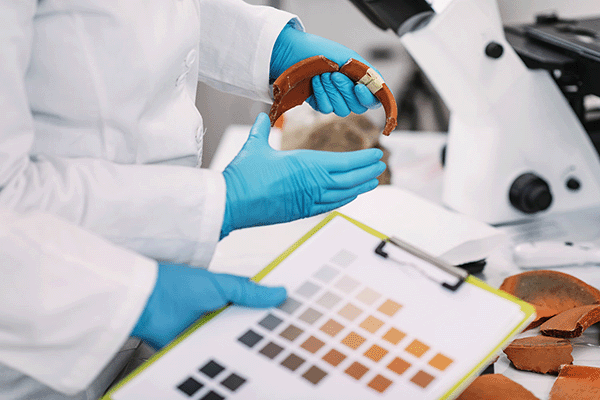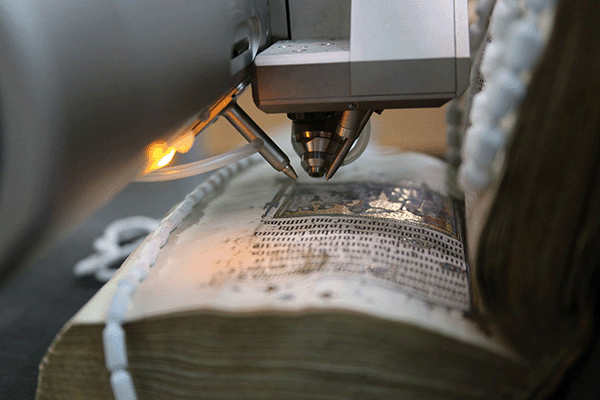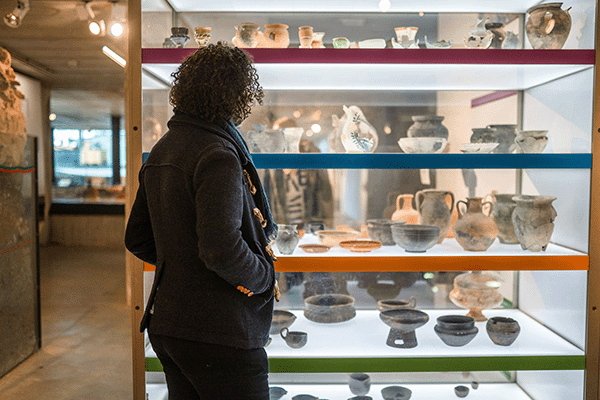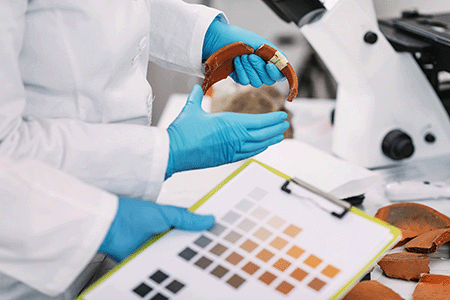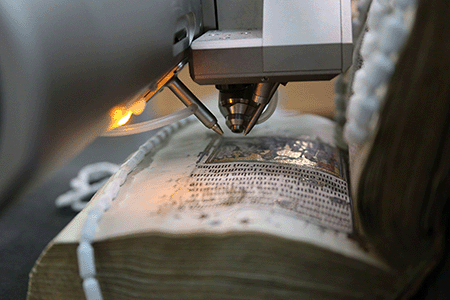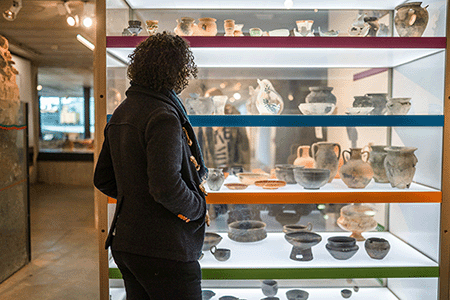In February, the RICHeS team travelled to Kent to visit the National Trust’s Royal Oak Foundation Conservation Studio at Knole. The team met with Rebecca Hellen, Senior National Conservator for Paintings at the National Trust and Project Lead of the Tranche 1 Collections RICHeS Funded Material History project and her colleagues. Through this initiative, RICHeS is supporting the development of the National Trust Paint Archive Collection, sharing invaluable resources on the history, colour and coatings within historic houses and collections.
Making conservation publicly visible
Nestled within a 600-year old barn, the Royal Oak Foundation Conservation Studio at Knole provides a unique space where conservation work is made accessible to the public. As part of a transformative £20 million project at Knole, this facility offers visitors a rare opportunity to observe conservators at work, free of charge. Informational displays and pull-out drawers provide insights into the techniques being used, allowing guests to engage directly with the intricate process of heritage conservation.
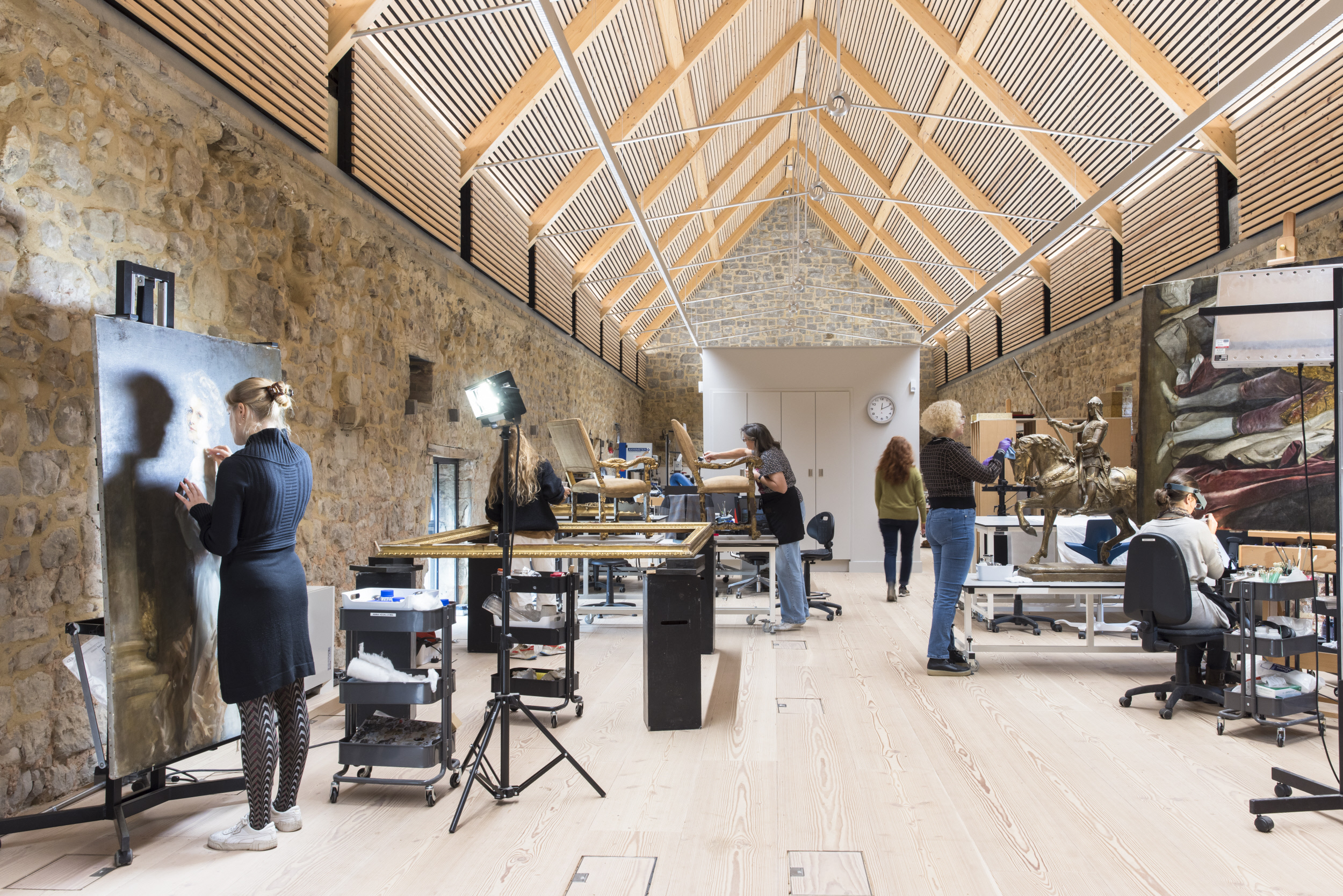
For the conservators, the studio fosters a dynamic, open-plan environment where multidisciplinary collaboration thrives. The RICHeS team explored several on-going projects including the analysis of a historic painting and the meticulous restoration of damaged ceramics and gilded chairs.
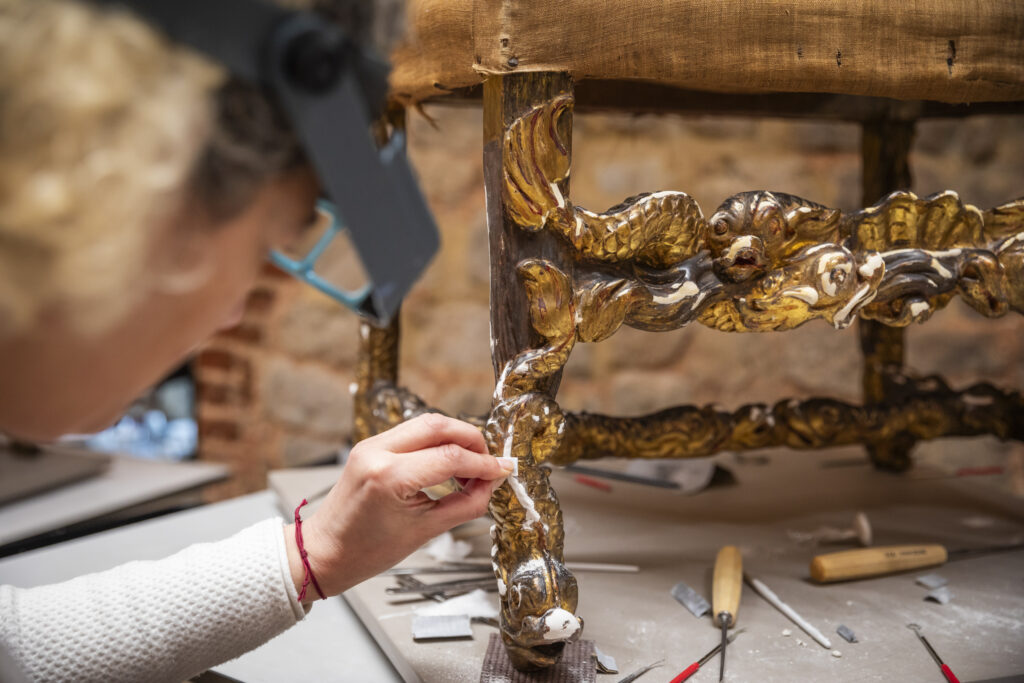
The National Trust also actively supports endangered heritage skills and the RICHeS team were fortunate to witness the intricate craft of composition frame making using traditional moulds and pastes sourced from local frame makers.
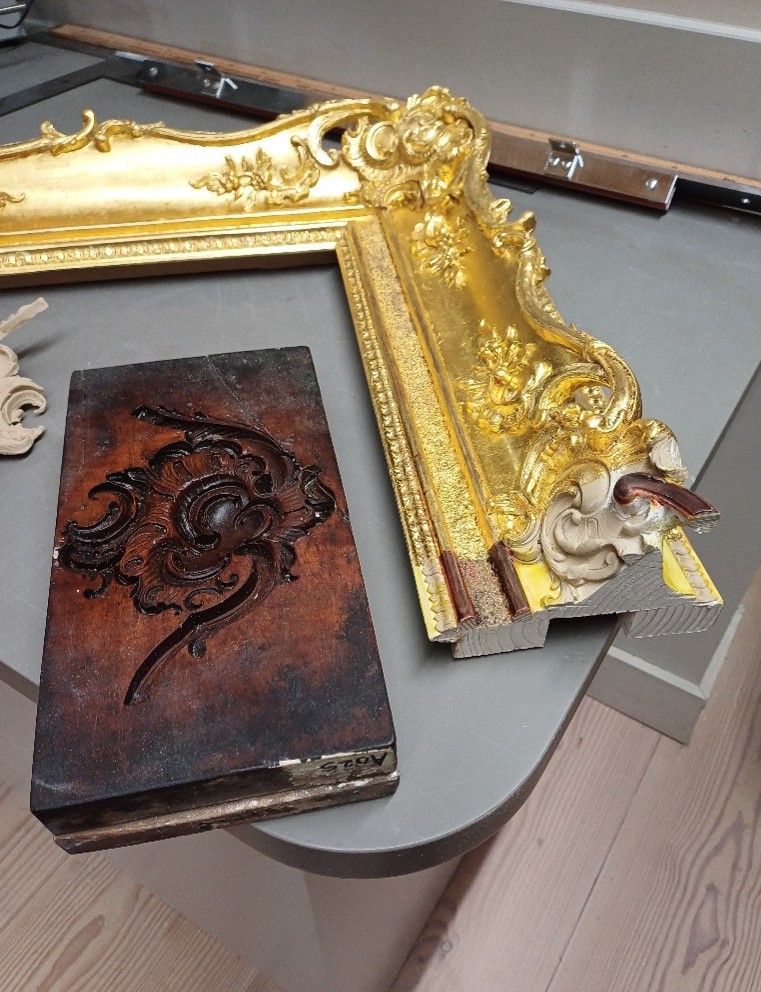
Strengthening Knole’s heritage science capabilities
In 2023, the National Trust received funding from an Arts and Humanities Research Council Creative Research and Capabilities (CReSCa) grant, enabling them to enhance the heritage science equipment at Knole. One key piece of equipment was the portable X-ray fluorescence (XRF) device, which allows for non-invasive analysis. During the visit, RICHeS observed this technology being used to analyse a collection of chairs from Ham House revealing where the gilding contained gold or silver. As a hub for conservation, the studio at Knole plays a vital role in supporting the analysis of National Trust collections across the UK.
The RICHeS funded paint archive: a national resource
The RICHeS funded Paint Archive will put colour at the heart of conservation by studying pigments in historic paint. With over 200 properties under its care, as well as gardens, nature reserves, farmland and coastline, the National Trust is responsible for the UK’s largest collection of paintings, wall paintings and painted interiors. However, paint is not limited to traditional paintings. The archive of paint samples and scrapes will also support the conservation and analysis of decorative arts including ceramics, furniture and jewellery. While the Paint Sample Archive is based at Knole, its impact will be felt across National Trust sites nationwide, providing a crucial resource for preserving and understanding historic materials.
Inspiring future conservation
In its newly released strategy to 2035, the National Trust outlines three key goals:
- Restore nature
- End unequal access to nature, beauty and history
- Inspire more people to care and take action.
The Knole Conservation Studio offers a tool for inspiration to thousands of visitors each year and, with enhanced capacity and capabilities supported by RICHeS, the RICHeS team look forward to furthering access to the Paint Archive at Knole.
Rebecca Hellen shares:
“We were delighted to host our first AHRC / RICHeS guests to the Royal Oak Foundation Conservation Studio as we embark on this colourful journey and create our first archive of paint samples from across the whole of the National Trust’s portfolio. From fine art to domestic interiors the opportunities to share information across our own far flung properties and to secure these little samples and their secrets for the longer term is hugely welcome. Our set up period is a crucial time and we are delighted our team is now in place. The chance to explore our colourful pasts will be a fantastic opportunity for our heritage science communities and is sure to extend beyond to reach a ‘rich’ and wide audience.“

